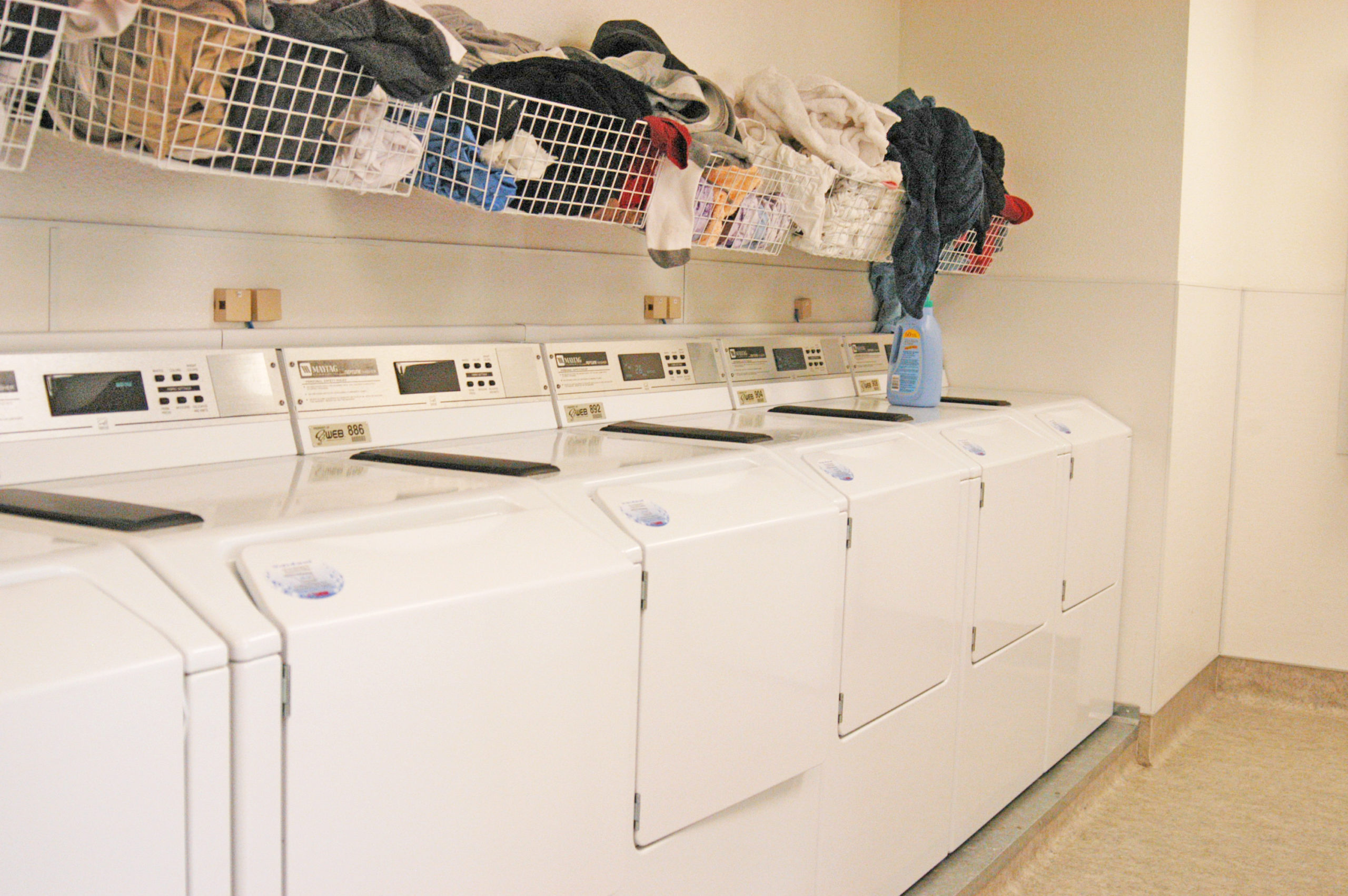It’s Sunday afternoon and you’re down to your last pair of socks. Actually, you’ve been on your last pair for the past two days, but we won’t tell anyone. You bounce your overflowing hamper down the steps to the basement, only to find a laundry war zone: peers sparring over the last open washer and clothing casualties strewn across every flat surface. With a sigh, you turn around. Maybe tomorrow.
Sound familiar? It’s not just you. We analyzed laundry machine usage across 23 undergraduate and graduate Stanford residences and found that Saturday and Sunday afternoons are indeed the busiest laundry hours of the week. For those residences, one in five laundry machines are in use on weekend afternoons. This weekend laundry rush also spills over into the early and late weekdays, leaving Tuesdays and Wednesdays with the lowest laundry room traffic.
(Due to the data collection methods, explained in the Methods section below, we were only able to collect data for 10 undergraduate and 13 graduate laundry rooms, so we do not consider this representation of campus-wide laundry usage.)
When examining residences individually, we find some interesting deviances from average laundry usage patterns. Undergraduate residences have more inconsistent laundry peak times, perhaps due to the greater flexibility in undergraduate schedules. Wilbur, the only all-freshman dorm with available data, has fairly average usage patterns. In contrast, in Crothers, an upperclass dorm, laundry usage is shifted towards the late evening and early morning hours (note the dark reds on the far right and left of Crothers’ heatmap below).
Graduate laundry rooms are more consistently busy on the weekends. In addition, they are generally less busy than undergraduate laundry rooms because they have more washers and dryers.
Returning to undergraduate residences, the stark difference between peak laundry busyness in Branner and Crothers (both upperclass dorms) can be explained by the number of laundry machines relative to the number of residents. As shown in the table below, Branner tops the list of undergraduate residences with a residents-to-laundry-machine ratio of 5.2, while Crothers sits in the middle of the pack at 8.4. At the bottom of the list is Kimball, an upperclass dorm that neighbors Branner, with nearly 17 residents per laundry machine.
See how your dorm’s laundry machine availability stacks up below.
While our laundry usage data is not campus-wide, we think it’s safe to say that if you’re not keen on butting heads in the laundry room, consider switching your laundry schedule up and avoiding weekends.
Method and limitations
Our data comes from LaundryAlert, an online service that monitors the number of available washers and dryers per laundry room. While Stanford’s LaundryAlert sites (undergrad and grad) claim to have access to 105 laundry rooms across campus, we found that only 28 had updating availability numbers. Of those, we removed five that had suspicious data (for example, one room marked four washers as permanently busy and other rooms never reported any washers in use).
We collected data over five weeks by scraping the machine availability table every 15 minutes. Due to computing constraints, the scraping script was only run when the author’s laptop was left on, which was usually during the day but sometimes overnight as well.
While the data presented is by no means complete coverage of laundry usage patterns on campus, we believe it gives a fair approximation of what those patterns may be if complete data for all laundry rooms were available.
Data on the number of residents per dorm comes from the 2019-20 Undergraduate Housing Residence Chart.
